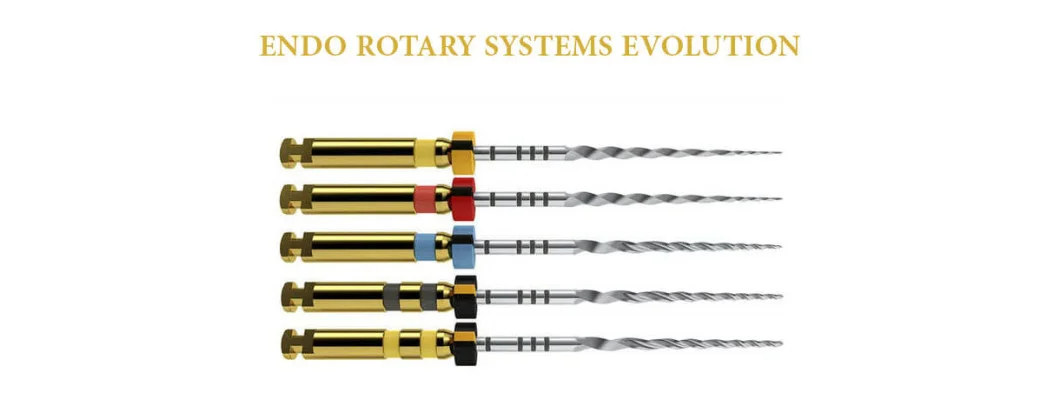Endo Rotary Files Generations (Evolution)

Endo Rotary Files Generations (Evolution)
03 Jan 2026
Endodontic treatments have been improving in the latest years as a result of new techniques that appeared in past years. New metals other than SS have been used such as NiTi which presented files with better cleaning for the whole canal which is the main idea of RCT.
SS files and NiTi have the qualities of conserving the shape of the root canals and avoiding ledges or perforations.
First Generation (Discontinued)
It all started with having passive cutting radial lands with taper between 4%-6% over all the working length. It’s important to say that this generation of files created root canal walls which cause few complications comparing it to other generations.
Second Generation (Discontinued)
This generation’s files have active cutting edges which are totally different from the first generation. That means lesser files and decreasing working time. Notable systems in this generation are ProTaper and K3. Even after it had been tested and showed that it can conserve the original pathway of the canals, sometimes it might cause ledges along with separation in use.
Third Generation
Scientists focused on this generation to make different kinds of files by inventing new technologies such as M-wire and R-phase by applying heating and cooling in order to increase safety, especially in the curved root canals. The main purpose of this movement is to reduce cyclic fatigue which makes you use files longer.
HyFlex™ is a third-generation file which predisposed to gold thermal treatment in order to increase its cutting efficiency
Also, we should mention the Protaper Gold™ file system which is developed with proprietary advanced metallurgy. PG rotary files feature the same exact geometries as ProTaper Universal but they may appear slightly curved when removed from the package due to their metallurgy. This is not a defect, but rather, an advantage.
Fourth Generation
In the fourth generation, the manufacturers depended on the reciprocation clockwise and counterclockwise instead of using rotational moves as in the previous generations. The reciprocation movement led to the use of a single file technique which showed up very good results in shaping and cleaning canals.
The most important technique in this generation is SAF (self-adjusting file) Which was purported to exert uniform pressure on the dentinal walls in order to cut in a very effective way.
The most popular single-file concept is termed as ProTaper WaveOne™ is a convergence of the best design features from the second and third generation of files, coming with a reciprocating motor that drives any given file in unequal bidirectional angles.
Fifth Generation
The performance in these kinds of files depended on changing the center of rotation by distributing the powers all along with the NiTi file which increases the ability of the cutting.
In conclusion, this design lowers the chances of taper locking and screwing effects which make them the main reason for instrument separation.
ProTaper Next™ is an excellent example of the fifth generation. This file system depends on 3 cutting files and three finishing ones with fewer files.
